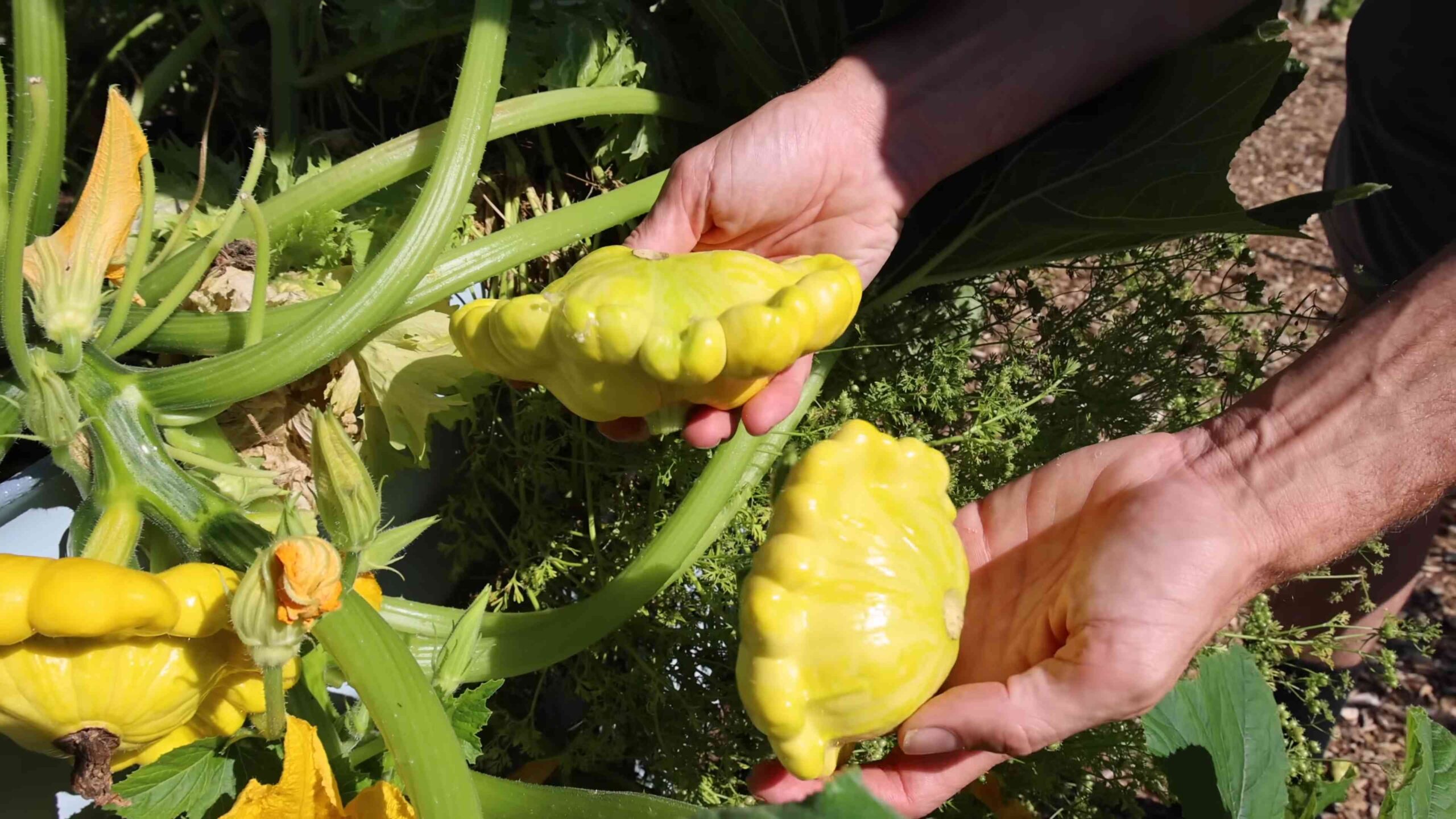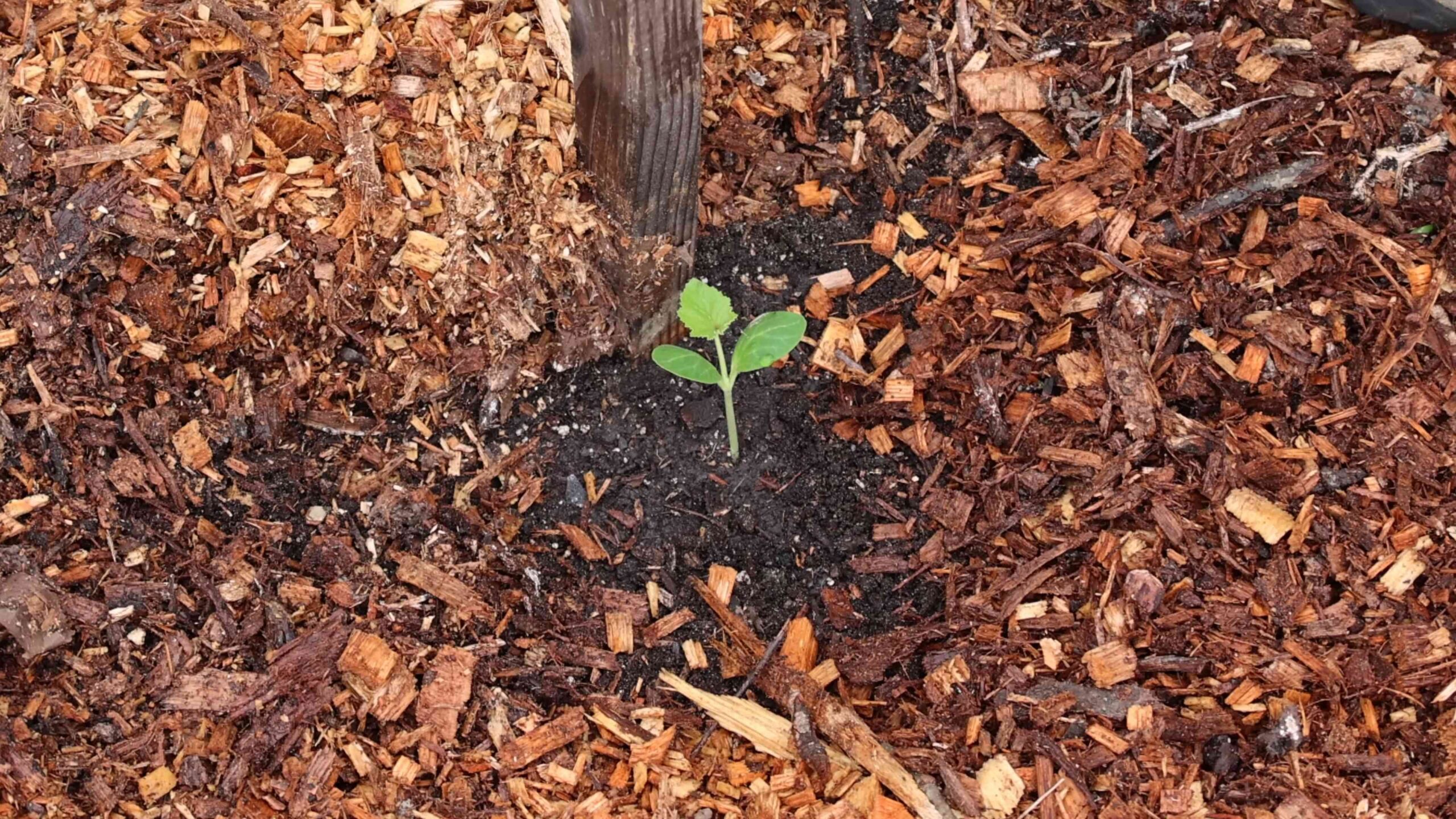Vertical squash gardening: Ever dream of a lush, overflowing garden bursting with vibrant squash, but feel limited by space? I get it! We’ve all been there, staring at our tiny balconies or compact backyards, thinking a bountiful harvest is simply out of reach. But what if I told you there’s a way to defy those spatial constraints and cultivate a thriving squash patch, reaching for the sky instead of sprawling across the ground?
For centuries, gardeners have sought innovative ways to maximize their yields, and the concept of vertical gardening, while recently popularized, has roots stretching back to ancient civilizations. Think of the Hanging Gardens of Babylon, a testament to human ingenuity in creating verdant oases in challenging environments. While we might not be building architectural wonders, we can borrow that spirit of innovation to transform our own small spaces.
That’s where this DIY guide comes in! Vertical squash gardening isn’t just a trendy gardening technique; it’s a practical solution for anyone facing limited space, pest control challenges, or even back pain from bending over traditional squash patches. Squash plants, with their sprawling vines, can quickly take over a garden, but by training them upwards, you’ll save valuable ground space, improve air circulation (reducing the risk of fungal diseases), and make harvesting a breeze. Plus, let’s be honest, a wall of cascading squash is a stunning visual addition to any home!
In this article, I’ll walk you through everything you need to know to create your own thriving vertical squash garden, from choosing the right varieties to building simple, effective support structures. Get ready to unlock the secrets to a bountiful harvest, no matter how small your space!

DIY Vertical Squash Gardening: Grow Up, Not Out!
Hey there, fellow gardeners! Are you dreaming of a bountiful squash harvest but short on space? Well, I’ve got the perfect solution for you: vertical squash gardening! It’s a fantastic way to maximize your yield, keep those sprawling vines under control, and even add a touch of visual interest to your garden. Trust me, once you try it, you’ll never go back to traditional ground gardening for your squash.
Why Go Vertical with Squash?
Before we dive into the how-to, let’s quickly touch on why vertical gardening is such a game-changer for squash:
* Space Saving: This is the big one! Squash vines can take over your entire garden if left unchecked. Growing vertically allows you to grow more in a smaller footprint.
* Improved Air Circulation: Lifting the vines off the ground promotes better airflow, which helps prevent fungal diseases like powdery mildew.
* Easier Harvesting: No more crawling around on your hands and knees to find hidden squash! They’re right there at eye level, making harvesting a breeze.
* Pest Control: Vertical gardening can make it harder for some ground-dwelling pests to reach your precious squash.
* Aesthetic Appeal: Let’s be honest, a trellis covered in lush green squash vines is just plain beautiful!
Choosing the Right Squash Variety
Not all squash varieties are created equal when it comes to vertical gardening. You’ll want to choose varieties that are naturally more compact or produce smaller fruits. Here are a few of my favorites:
* Zucchini: Many zucchini varieties are well-suited for vertical gardening, especially bush types.
* Yellow Squash: Similar to zucchini, look for bush varieties of yellow squash.
* Delicata Squash: This smaller winter squash is a great option for vertical growing.
* Spaghetti Squash: While the vines can be vigorous, spaghetti squash fruits are relatively lightweight, making them manageable on a sturdy trellis.
* Patty Pan Squash: These cute, saucer-shaped squash are perfect for smaller gardens and vertical structures.
* Smaller Butternut Squash: Some newer, more compact butternut squash varieties are available. Check the seed packet for details.
Important Note: Avoid growing very large, heavy squash varieties like pumpkins or some types of Hubbard squash vertically. The weight of the fruit can easily damage your trellis or even cause it to collapse.
Building Your Vertical Support System
Okay, now for the fun part! You’ll need a sturdy support system for your squash vines to climb. Here are a few options:
* Trellises: A classic choice! You can buy pre-made trellises or build your own from wood, metal, or even bamboo. Make sure the trellis is tall enough to accommodate the mature size of your chosen squash variety. I recommend at least 6 feet tall.
* Arches: Arches add a beautiful architectural element to your garden. Just make sure they’re strong enough to support the weight of the squash.
* Cattle Panels: These sturdy metal panels are a great option for larger squash varieties. You can bend them into an arch or simply lean them against a fence.
* DIY Structures: Get creative! You can use old ladders, repurposed pallets, or even build a custom structure from PVC pipe.
My Personal Recommendation: I personally love using cattle panels. They’re strong, durable, and relatively inexpensive. Plus, they’re easy to work with.
Step-by-Step Guide to Vertical Squash Gardening
Alright, let’s get our hands dirty! Here’s a step-by-step guide to setting up your vertical squash garden:
1. Choose Your Location
* Select a spot in your garden that receives at least 6-8 hours of sunlight per day. Squash needs plenty of sun to thrive.
* Make sure the location has well-draining soil. Squash doesn’t like to sit in soggy soil.
* Consider the mature size of your squash vines when choosing a location. You’ll need enough space for the vines to climb and spread.
2. Prepare the Soil
* Amend the soil with plenty of compost or other organic matter. This will improve drainage, fertility, and water retention.
* If your soil is heavy clay, consider adding some sand or perlite to improve drainage.
* Test your soil pH. Squash prefers a slightly acidic to neutral pH (around 6.0-7.0).
3. Set Up Your Support Structure
* Install your trellis, arch, or cattle panel securely in the ground. Make sure it’s stable and won’t tip over under the weight of the squash.
* If you’re using a trellis, make sure the openings are large enough for the squash vines to easily grab onto.
* For cattle panels, you can use metal stakes or T-posts to secure them in place.
4. Plant Your Squash
* You can either start your squash seeds indoors 4-6 weeks before the last frost or direct sow them in the garden after the danger of frost has passed.
* If starting indoors, transplant the seedlings into the garden when they have 2-3 true leaves.
* Plant the squash seedlings at the base of your support structure, spacing them according to the seed packet instructions.
* Water the seedlings thoroughly after planting.
5. Train the Vines
* As the squash vines grow, gently guide them up the support structure.
* Use plant ties or twine to secure the vines to the trellis or panel.
* Check the vines regularly and continue to train them as they grow.
* Remove any tendrils that are growing in the wrong direction or are not supporting the plant.
6. Water and Fertilize
* Water your squash plants deeply and regularly, especially during hot, dry weather.
* Avoid overhead watering, as this can promote fungal diseases.
* Fertilize your squash plants every 2-3 weeks with a balanced fertilizer.
* You can also side-dress the plants with compost or aged manure.
7. Pollination
* Squash plants have separate male and female flowers. The female flowers have a small fruit at the base.
* Bees are the primary pollinators of squash. If you’re not seeing many bees in your garden, you may need to hand-pollinate the flowers.
* To hand-pollinate, use a small paintbrush to transfer pollen from the male flower to the female flower.
8. Support the Fruit (If Necessary)
* As the squash fruits grow larger, they may need additional support.
* You can use slings made from old pantyhose, fabric scraps, or netting to support the fruit.
* Tie the slings to the trellis or panel to prevent the fruit from breaking off the vine.
9. Harvest Your Squash
* Harvest your squash when it’s mature and the skin is firm.
* The exact harvesting time will depend on the variety of squash you’re growing.
* Use a sharp knife or pruners to cut the squash from the vine, leaving a few inches of stem attached.
Troubleshooting Common Problems
Even with the best planning, you might encounter a few challenges along the way. Here are some common problems and how to deal with them:
* Powdery Mildew: This fungal disease can cause a white, powdery coating on the leaves. To prevent powdery mildew, ensure good air circulation, avoid overhead watering, and apply a fungicide if necessary.
* Squash Vine Borers: These pests can tunnel into the stems of your squash plants, causing them to wilt and die. To prevent squash vine borers, wrap the base of the stems with aluminum foil or netting. You can also inject Bacillus thuringiensis (Bt) into the stems to kill the borers.
* Aphids: These tiny insects can suck the sap from your squash plants, causing them to weaken. To control aphids, spray the plants with insecticidal soap or neem oil.
* Lack of Pollination: If your squash plants are producing flowers but no fruit, it could be due to a lack of pollination. Try hand-pollinating the flowers or attracting more bees to your garden by planting bee-friendly flowers.
Tips for Success
Here are a few extra tips to help you succeed with vertical squash gardening:
* Choose the right variety: As mentioned earlier, select squash varieties that are well-suited for vertical growing.
* Provide adequate support: Make sure your support structure is strong enough to handle the weight of the squash.
* Train the vines regularly: Guide the vines up the support structure as they grow.
* Water and fertilize properly: Squash needs plenty of water and nutrients to thrive.
* Monitor for pests and diseases: Check your plants regularly for signs of pests or diseases and take action promptly.
* Be patient: It takes time for squash to grow and mature. Don’t get discouraged if you don’t see results immediately.
Enjoy Your Harvest!
And there

Conclusion
So, there you have it! Transforming your squash patch into a vertical garden isn’t just a trendy gardening hack; it’s a game-changer for maximizing space, improving plant health, and ultimately, yielding a more bountiful harvest. We’ve explored the myriad benefits, from enhanced air circulation that combats common squash diseases like powdery mildew to the sheer joy of watching your squash vines climb and thrive in an organized, visually appealing manner.
This DIY trick is a must-try because it addresses several common gardening challenges simultaneously. Are you struggling with limited space in your urban garden? Vertical squash gardening is your answer. Tired of battling squash vine borers that wreak havoc on your plants? Elevating your squash off the ground makes them less accessible to these pests. Frustrated with sprawling vines taking over your entire garden bed? Training them upwards keeps them contained and manageable.
But the beauty of vertical squash gardening lies not only in its practicality but also in its adaptability. Feel free to experiment with different support structures. While we’ve discussed using trellises and cages, you could also repurpose old ladders, create a living wall with pallet gardens, or even construct a simple A-frame structure using bamboo poles.
Consider the type of squash you’re growing. Smaller varieties like zucchini, yellow squash, and some bush varieties are naturally better suited for vertical gardening. However, with proper support and careful training, you can even grow larger varieties like butternut squash or even smaller pumpkins vertically. Just be sure to provide adequate support for the developing fruits, perhaps using slings made from old pantyhose or netting.
Don’t be afraid to get creative with your planting arrangements. Companion planting is just as effective in a vertical garden as it is in a traditional one. Plant basil near your squash to deter pests, or add some nasturtiums to attract beneficial insects. The possibilities are endless!
Ultimately, the success of your vertical squash garden hinges on your willingness to experiment and adapt. Observe your plants closely, adjust your watering and fertilizing schedule as needed, and don’t be discouraged if you encounter a few challenges along the way. Gardening is a learning process, and every season brings new opportunities for growth and discovery.
We wholeheartedly encourage you to give this DIY trick a try. It’s a rewarding and sustainable way to grow your own delicious squash, regardless of your gardening experience or the size of your outdoor space. And most importantly, we want to hear about your experiences! Share your photos, tips, and challenges in the comments below. Let’s build a community of vertical squash gardeners and learn from each other’s successes and failures. Together, we can unlock the full potential of this innovative gardening technique and enjoy a bountiful harvest of homegrown squash. So, grab your seeds, build your trellis, and get ready to experience the joy of vertical squash gardening!
Frequently Asked Questions (FAQ)
What types of squash are best suited for vertical gardening?
While many squash varieties can be grown vertically with proper support, bush varieties and smaller vining types tend to be the most successful. Zucchini, yellow squash, delicata squash, and smaller butternut squash varieties are excellent choices. Larger, heavier varieties like pumpkins can be grown vertically, but they require very sturdy support structures and individual slings for each fruit. Consider the mature size and weight of the squash when selecting your varieties.
How do I train my squash vines to grow vertically?
Training squash vines is a simple but essential process. As the vines grow, gently guide them towards your chosen support structure (trellis, cage, etc.). Use soft plant ties or twine to secure the vines to the support, being careful not to constrict the stems. Regularly check the ties and loosen them as the vines grow thicker. Encourage lateral growth by pinching off the tips of the vines, which will promote branching and more fruit production.
What kind of support structure should I use for my vertical squash garden?
The best support structure depends on the type of squash you’re growing and the space you have available. Trellises are a popular choice, providing ample support for vining varieties. Cages can be used for bush varieties or to provide extra support for heavier fruits. You can also repurpose old ladders, build a living wall with pallet gardens, or create a simple A-frame structure using bamboo poles. Ensure the structure is sturdy enough to support the weight of the mature plants and fruits.
How often should I water my vertical squash plants?
Vertical squash plants tend to dry out more quickly than those grown in the ground, so regular watering is crucial. Water deeply and frequently, especially during hot, dry weather. Check the soil moisture regularly and water when the top inch feels dry to the touch. Consider using a soaker hose or drip irrigation system to deliver water directly to the roots.
Do I need to fertilize my vertical squash plants differently?
Vertical squash plants require regular fertilization to support their growth and fruit production. Use a balanced fertilizer or one specifically formulated for vegetables. Apply fertilizer according to the package instructions, typically every 2-3 weeks. You can also supplement with compost tea or other organic fertilizers to provide additional nutrients.
How do I prevent squash vine borers in my vertical garden?
While vertical gardening can help reduce the risk of squash vine borers, it doesn’t eliminate it entirely. Monitor your plants regularly for signs of infestation, such as wilting leaves or holes in the stems. Wrap the base of the stems with aluminum foil or netting to prevent the borers from laying their eggs. You can also use row covers to protect your plants during the borer’s active season.
What other pests and diseases should I watch out for?
Besides squash vine borers, other common pests and diseases that can affect squash plants include aphids, squash bugs, powdery mildew, and downy mildew. Inspect your plants regularly for signs of infestation or disease and take appropriate action. Use organic pest control methods whenever possible, such as insecticidal soap or neem oil. Ensure good air circulation to prevent fungal diseases.
Can I grow squash vertically in containers?
Yes, you can grow squash vertically in containers, but you’ll need to choose a large container (at least 20 gallons) to accommodate the plant’s root system. Use a well-draining potting mix and provide adequate support for the vines. Container-grown squash plants may require more frequent watering and fertilization than those grown in the ground.
How do I know when my squash is ripe and ready to harvest?
The ripeness of squash varies depending on the variety. Generally, summer squash like zucchini and yellow squash are harvested when they are young and tender, while winter squash like butternut squash and acorn squash are harvested when they are fully mature and the skin is hard. Check the seed packet or plant tag for specific harvesting instructions for your chosen varieties.
What if my vertical squash garden isn’t thriving?
If your vertical squash garden isn’t thriving, don’t give up! First, assess the growing conditions. Are your plants getting enough sunlight, water, and nutrients? Are they protected from pests and diseases? Adjust your care routine as needed. If you’re still having trouble, consult with a local gardening expert or extension office for advice specific to your region. Remember, gardening is a learning process, and every season brings new opportunities for improvement.





Leave a Comment